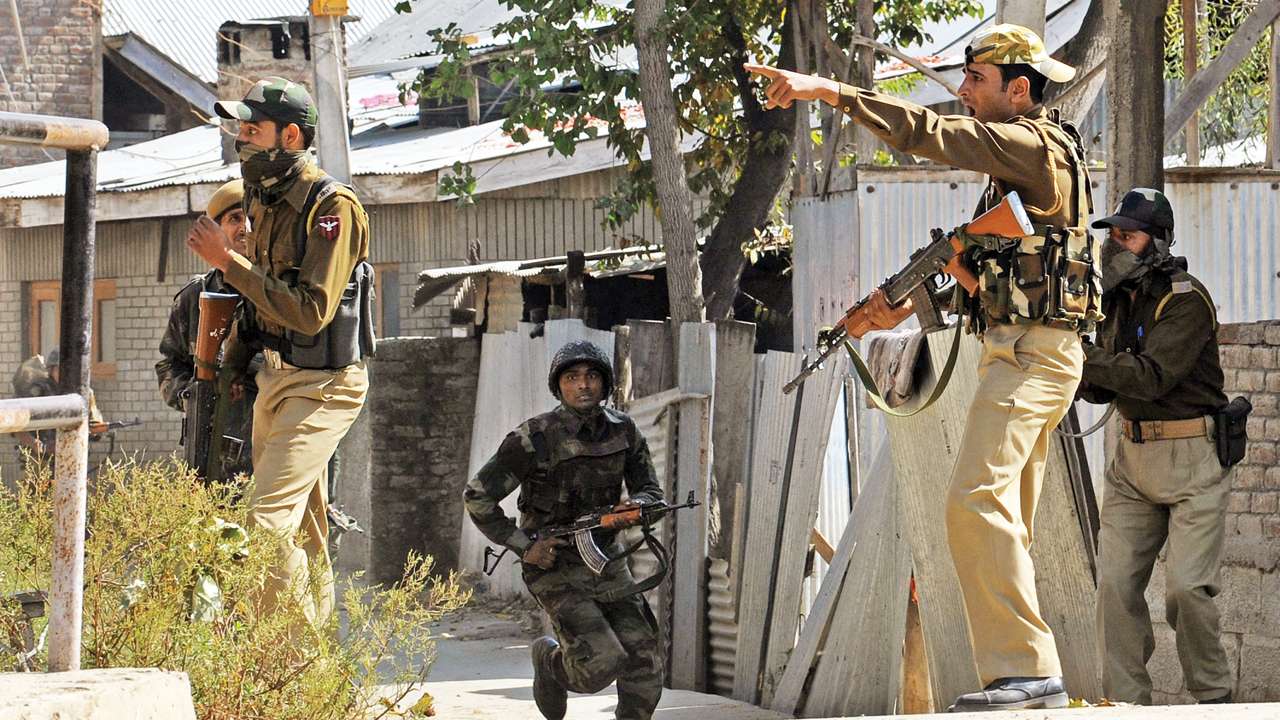
For a counter-insurgency force that is the largest of its kind in the world, the Rashtriya Rifles receives very little attention in discussions and writings on India’s endless war in Kashmir.
Staying out of the limelight, however, does not take away in any way the immense contributions made by this force in the past quarter century in India’s fight against Pakistan’s proxy war in Jammu and Kashmir.
The origins of the Rashtriya Rifles go back to the late 1980s when the Indian Army was overstretched, deployed as it was from Sri Lanka to Kashmir and from Punjab to North-east. Under Operation Pawan in Sri Lanka, the Indian Peacekeeping Force (IPKF) had taken away four frontline divisions; insurgency in the North-east was still raging and Punjab was showing all signs of needing the Army’s helping hand in getting the trouble there under control. Towards the end of the 1980s, it became clear that a special force was required to deal with India’s turbulent internal security situation; a credible force which would prevent frequent deployment of the Army’s frontline formations and units on internal security. Regular infantry units were getting less time to rest and recuperate.
The top brass under then Army Chief General SF Rodrigues (who succeeded Sundarji) decided to make the Rashtriya Rifles an all-army force. The government was still reluctant to put its full weight behind the idea. Old timers recall that the dominant thought process in 1990 at the highest levels in government was still to push in two divisions of the Army — the 39th and 6th — into counter-insurgency operations.
The Army top brass resisted fiercely and insisted on a specialised counter-insurgency force. Looking back, that decision not to deploy the 39th and 6th division (the latter Army Headquarters reserve) was perhaps the most crucial advice that the Army gave to the government.
Today, the Rashtriya Rifles has grown into a 65-battalion (nearly seven divisions!) force which has honed its counter-insurgency skills and may now be ready to do dual tasking of guarding the Line of Control.
Moreover, like the Assam Rifles in the North-east, the Rashtriya Rifles in J&K has emerged as a force that now has unmatched knowledge of the terrain, the people, local dynamics and most importantly, intelligence.
It is now the spearhead of the Indian Army’s sub-conventional war doctrine.
In many ways, the Rashtriya Rifles remains a unique experiment in the Army’s ever-evolving improvisation, mainly because never in the past has such an ‘all-arms’, polyglot composition worked in tandem to produce such magnificent results. Today, Rashtriya Rifles units are as battle-hardened, seasoned and effective as any infantry formation.
It is also interesting to note how the current composition of Rashtriya Rifles units evolved. After initial teething trouble a new formula was evolved on the basic composition of Rashtriya Rifles units. Most Indian Army regiments were told to raise two Rashtriya Rifles battalions and provide 60 per cent of the strength for each unit. The rest 40 per cent were drawn from all services and arms.
Additionally, the Commanding Officer and his No 2 were drawn from the same regiment. This ensured basic cohesion and discipline. The new formula also engendered a sense of ownership amongst the regiments.
Now as a matter of routine one finds a Rashtriya Rifles battalion proudly displaying its parent regiment’s name on display boards and sign posts. So, across Jammu and Kashmir it is now common to see boards proudly displaying signs such as 36 Rashtriya Rifles (Garhwal) or 40 Rashtriya Rifles (Dogra)!
Apart from the cohesion, now more than evident, on a larger scale, the Rashtriya Rifles has allowed other arms and services to get a first-hand battle experience they would otherwise have lacked.
Officers from Armoured, Artillery, Engineers, Signals or even those from the Ordnance and Supply Corps would not have had the chance to gain real combat experience had it not been for the opportunity provided by Rashtriya Rifles.
Over the past two decades, many officers from these arms and services have distinguished themselves in conflict and have, in fact, earned several gallantry awards while deployed in Rashtriya Rifles.
Aware of the potential of these battle-hardened Rashtriya Rifles battalions, the top military leadership in the Northern Command is now gradually thinking of assigning a new role to these formations.
Accordingly, Rashtriya Rifles battalions deployed in Kashmir’s hinterland where militancy is at low ebb in the past few years are now being assigned a role along the Line of Control. By doing this, the top brass is readying the Rashtriya Rifles units for multi-tasking in the future.
To implement and fine-tune the new strategy, the government will have to redefine the Rashtriya Rifles’ role and absorb it as a regular force and not keep it hanging as an ad hoc formation.
The writer is a strategic affairs analyst, author and founder of BhartShakti.in, a specialised defence website